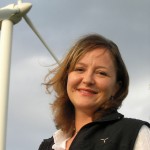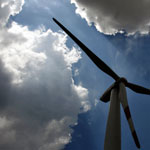 Wind energy can be controversial when it comes to public acceptance, even if opinion polls show the public are largely in favour. We talk to Anna Stanford, Public Affairs Manager at RES and Lead Session Chair at EWEA 2013 in Vienna next month, to get the low-down on the issues and the solutions.
Wind energy can be controversial when it comes to public acceptance, even if opinion polls show the public are largely in favour. We talk to Anna Stanford, Public Affairs Manager at RES and Lead Session Chair at EWEA 2013 in Vienna next month, to get the low-down on the issues and the solutions.
Have public acceptance issues risen over the last few years?
I’ve been working in the wind industry in the UK since 1992 and wind energy has always been controversial, polarising opinion at both a local community and national political level. Groups set up specifically to oppose wind have been active consistently since then and have influenced politicians and the media; ironically over the same period opinion polls have shown that public support for wind has remained consistently high.
While back then other markets did not seem to be experiencing the same level of controversy as the UK, this has changed, with anti-wind groups becoming increasingly well-organised globally and active in key markets (for example France, Canada and Australia). In the UK, while the majority of the public remain supportive of wind energy, it remains controversial and the issue is increasingly combative on the national political stage.
Why do you think this has occurred?
 Nine in ten people in France are in favour of renewable energy, a survey published on Thursday in Le Monde’s annual special publication Le Bilan du monde found, largely because of their clean and non-polluting image. Moreover, 63% of those surveyed said they think that more renewables will be used than traditional fuels in 50 years’ time.
Nine in ten people in France are in favour of renewable energy, a survey published on Thursday in Le Monde’s annual special publication Le Bilan du monde found, largely because of their clean and non-polluting image. Moreover, 63% of those surveyed said they think that more renewables will be used than traditional fuels in 50 years’ time.
However, only half of those surveyed consider renewable energies to be a cheap energy option and some 68% said the biggest obstacle to the development of renewables is their cost. 26% said wind farm aesthetics was the biggest hurdle, but 68% said they would accept the installation of wind turbines in their district with 45% of the 68% saying they would also accept turbines in their line of vision.
 Ontario, Canada’s most populous province with a population equivalent to Ireland, Northern Ireland, Scotland and Wales combined, has decided to abandon coal-fired electricity a year ahead of schedule.
Ontario, Canada’s most populous province with a population equivalent to Ireland, Northern Ireland, Scotland and Wales combined, has decided to abandon coal-fired electricity a year ahead of schedule.
“The early closure is a result of Ontario’s strong conservation efforts, a smarter electricity grid and a diverse supply of cleaner energy,” Dalton McGuinty, Ontario’s Premier said. “Shutting down the last coal plants in Southern Ontario will significantly reduce greenhouse gas emissions and save the province $ CAN95 million (€72.4 million).”
In a press release, the Canadian Wind Energy Association (CanWEA) said Ontario has reduced use of coal by 90% since 2003 while at the same time bringing online 2,000 MW of clean, emissions-free wind energy, up from 400 MW in 2006.

French ecology minister Delphine Batho
After months of uncertainty, French Ecology Minister Delphine Batho finally announced last week the second phase of a call for tenders for the construction of €3.5 billion worth of offshore wind farms to generate 1,000 megawatts of electricity.
The announcement followed up on a promise made by French Prime Minister Jean-Marc Ayrault during a government-hosted conference on the environment in September at which he and President François Hollande promised a plan to kick-start the renewables industry in France.
According to Batho, the projects will create 10,000 industrial jobs. The wind farms are planned for construction near Treport, in northern France, and near the Noirmoutier and Île d’Yeu islands on the Atlantic coast.

George Kariniotakis, lead session chair of forecasting at EWEA 2013
A weather forecast might be something you look at when deciding whether or not to take an umbrella with you in the morning, but for wind energy it is vitally important and contributes to the efficient management of wind-powered electricity. We spoke to George Kariniotakis, lead session chair of forecasting at EWEA’s 2013 Annual Event to find out more.
Can you describe the role wind forecasting plays in the wind power sector?
Forecasting the power output of wind farms in the next hours or days is of primary importance for the management of a power system with high wind penetration. Power system operators need to anticipate the necessary electricity generation to meet the electricity demand at each moment. The challenge comes when a large share of the generation depends on weather conditions, as is the case for wind energy. Wind power forecasts are useful for power system scheduling, congestion management, storage management, reserves allocation and other functions. Wind farm operators also need forecasts to participate in a day-ahead electricity market or to plan maintenance of wind farms.
What are the current technologies used?
 Wind energy can be controversial when it comes to public acceptance, even if opinion polls show the public are largely in favour. We talk to Anna Stanford, Public Affairs Manager at RES and Lead Session Chair at EWEA 2013 in Vienna next month, to get the low-down on the issues and the solutions.
Wind energy can be controversial when it comes to public acceptance, even if opinion polls show the public are largely in favour. We talk to Anna Stanford, Public Affairs Manager at RES and Lead Session Chair at EWEA 2013 in Vienna next month, to get the low-down on the issues and the solutions.






 Comments
Comments



